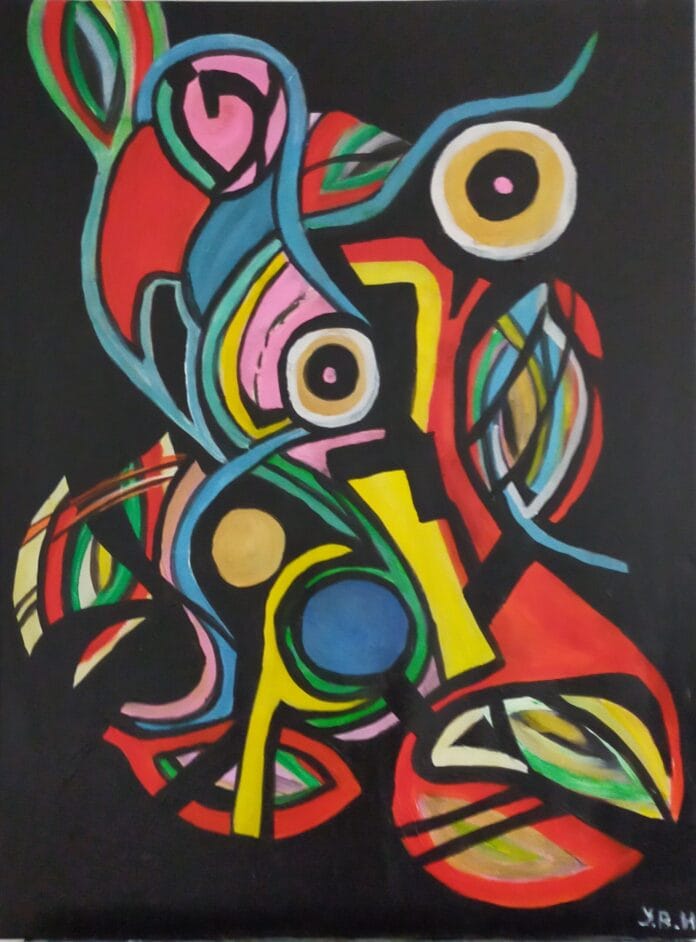Yakout Habri was born on March 6, 1957, to Algerian parents in a time and place shaped by cultural crossroads. Her life began in the aftermath of the Algerian War, when her family moved to France during the 1960s. This transition exposed her to the beauty and complexity of living between two worlds.
Her early years were colored by tales and legends, some rooted in Algeria, others deeply tied to French tradition. These dual narratives shaped her identity, creating a unique blend of East and West that would later influence her artistic voice. Habri often describes this cultural duality as her “wealth,” a gift that allowed her to navigate different perspectives and find strength in diversity.
Curious and open-minded, she grew into adulthood with a strong desire to connect with people and embrace their differences. For more than two decades, she dedicated her professional life to the social sector, focusing on human relationships and building bridges across communities. It was a vocation built on empathy, dialogue, and the belief that shared understanding enriches everyone involved.
But in the year 2000, everything changed. Habri was struck by a debilitating illness that altered the course of her life. Pain became her daily companion. What once felt like an enemy slowly turned into a reminder of life’s fragility and the vanity of superficial pursuits. Her body slowed down, and yet, from this stillness emerged a new creative path.
The Birth of a Painter
Three years after her illness began, Habri reached for painting not as an artistic ambition, but as a form of therapy. Her hands, aching and weakened, found release in brushstrokes. At first, painting was a way to exercise her body, a physical rehabilitation. But gradually, it transformed into something much deeper, a lifeline, a necessity for survival.
Through painting, she discovered laughter, tears, and a renewed sense of self. Entirely self-taught, Habri immersed herself in imagination and allowed colors and forms to become her language. The creative process became a dialogue between her body, her spirit, and the memories of her cultural heritage.
Music, cinema, and literature also became sources of inspiration, weaving themselves into her canvases as rhythms, moods, and atmospheres. Her art is not only a reflection of what she sees, but also of what she feels, her daily confrontation with pain, her resilience, and her will to find beauty in moments both fragile and profound.
Artistic Orientation
Bedridden for long periods, Habri relied on the outside world coming to her. Family and friends would send her photographs of nature, particularly flowers, to give her the illusion of still being part of the living, breathing world outside her room. This act of kindness sparked her earliest works.
She began painting flowers, portraits, and floral compositions. While others might call them “still lifes,” Habri rejects the term. For her, there is nothing “still” about life; every subject vibrates with energy, movement, and vitality. Her canvases celebrate the living pulse of existence, even when inspired by something as delicate as a flower.
Habri’s artistic influences reflect her openness to both Eastern and Western traditions. Leonardo da Vinci nourished her with visionary creativity, Salvador Dalí and Pablo Picasso inspired her with boldness and innovation, while Claude Monet gifted her moments of softness and nostalgia. Her work carries echoes of these masters, yet it retains a deeply personal signature rooted in resilience and the determination to see life as vibrant, even when circumstances might suggest otherwise.
The Rhythm of Creation
Unlike artists who maintain a steady studio practice, Habri’s rhythm is dictated by her health. There are times when she can work for weeks at a stretch, painting with intensity and passion, only to then be confined by her condition for months without being able to touch a brush.
She chose acrylics as her medium of choice, finding comfort in their quick-drying qualities and ease of use. Oil paints, though traditional, proved impossible for her to tolerate. With acrylics, she can work at a pace that aligns with her fluctuating energy, allowing her to capture inspiration when it arises without being overwhelmed by the material.
This intermittent pace has not diminished the emotional depth of her work. If anything, it has deepened it. Each canvas is charged with urgency an understanding that every creative moment is precious and cannot be taken for granted.
Beyond Appearances
For Habri, painting is not merely about aesthetics. It is about the sensuality of the gesture, the fleeting magic of the moment, and the ability to transcend physical limitations through creativity. Each stroke of the brush is an act of resistance against despair, a spark of joy against the backdrop of pain.
Her art asks viewers to look beyond appearances, to see the life force and human spirit woven into every detail. It is a reminder that even in the face of hardship, beauty and vitality can persist.
Selected Work: Breathless
Among her many works, one canvas stands out: Breathless. Inspired by circus performer animals, the piece captures both the fragility and resilience of beings who are forced into performance yet retain their grace and power. It is a metaphor for endurance, echoing Habri’s own journey, a life shaped by adversity, yet defined by the refusal to surrender.
Conclusion: A Light in the Darkness
Yakout Habri’s story is one of resilience, creativity, and the power of art to transform suffering into beauty. Her journey from social work to painting reflects not just a change of vocation, but a profound shift in how she experiences and shares life.
Painting has allowed her to survive, to find purpose, and to connect with others in ways words often cannot. Through her canvases, she shares not only her vision of the world but also her strength, reminding us that life, in all its fragility, is still vibrant and worth celebrating.
Each brushstroke lights up her life, and through her art, it lights up ours as well.


